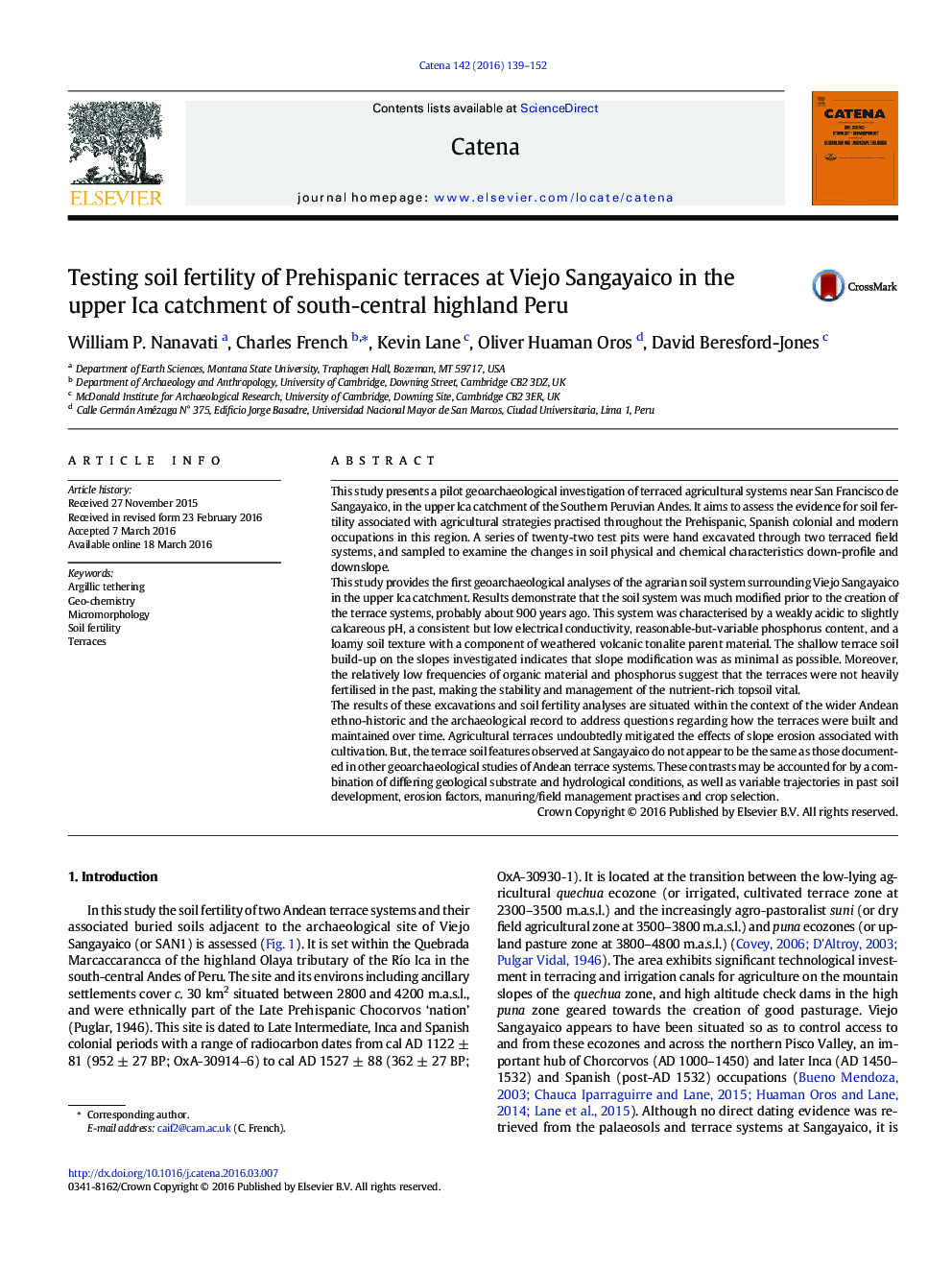| کد مقاله | کد نشریه | سال انتشار | مقاله انگلیسی | نسخه تمام متن |
|---|---|---|---|---|
| 6407834 | 1629210 | 2016 | 14 صفحه PDF | دانلود رایگان |

- The pre-terrace buried soils at Sangayaico indicate massive alterations in the past.
- The terrace systems show little evidence of soil thickening and fertilisation.
- The terraces exhibit only limited degradation over the past 1000Â years.
- The study gives a different picture than other valleys in Andean South America.
This study presents a pilot geoarchaeological investigation of terraced agricultural systems near San Francisco de Sangayaico, in the upper Ica catchment of the Southern Peruvian Andes. It aims to assess the evidence for soil fertility associated with agricultural strategies practised throughout the Prehispanic, Spanish colonial and modern occupations in this region. A series of twenty-two test pits were hand excavated through two terraced field systems, and sampled to examine the changes in soil physical and chemical characteristics down-profile and downslope.This study provides the first geoarchaeological analyses of the agrarian soil system surrounding Viejo Sangayaico in the upper Ica catchment. Results demonstrate that the soil system was much modified prior to the creation of the terrace systems, probably about 900Â years ago. This system was characterised by a weakly acidic to slightly calcareous pH, a consistent but low electrical conductivity, reasonable-but-variable phosphorus content, and a loamy soil texture with a component of weathered volcanic tonalite parent material. The shallow terrace soil build-up on the slopes investigated indicates that slope modification was as minimal as possible. Moreover, the relatively low frequencies of organic material and phosphorus suggest that the terraces were not heavily fertilised in the past, making the stability and management of the nutrient-rich topsoil vital.The results of these excavations and soil fertility analyses are situated within the context of the wider Andean ethno-historic and the archaeological record to address questions regarding how the terraces were built and maintained over time. Agricultural terraces undoubtedly mitigated the effects of slope erosion associated with cultivation. But, the terrace soil features observed at Sangayaico do not appear to be the same as those documented in other geoarchaeological studies of Andean terrace systems. These contrasts may be accounted for by a combination of differing geological substrate and hydrological conditions, as well as variable trajectories in past soil development, erosion factors, manuring/field management practises and crop selection.
Journal: CATENA - Volume 142, July 2016, Pages 139-152